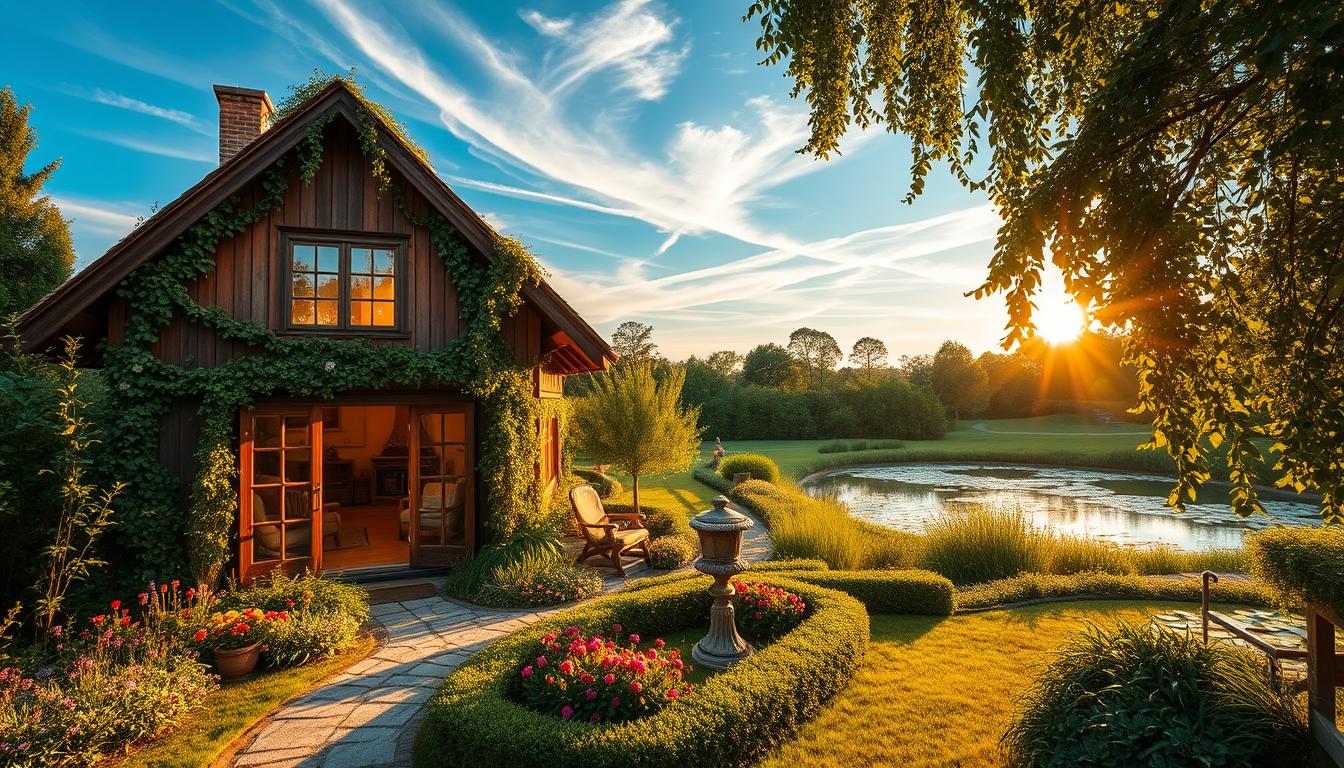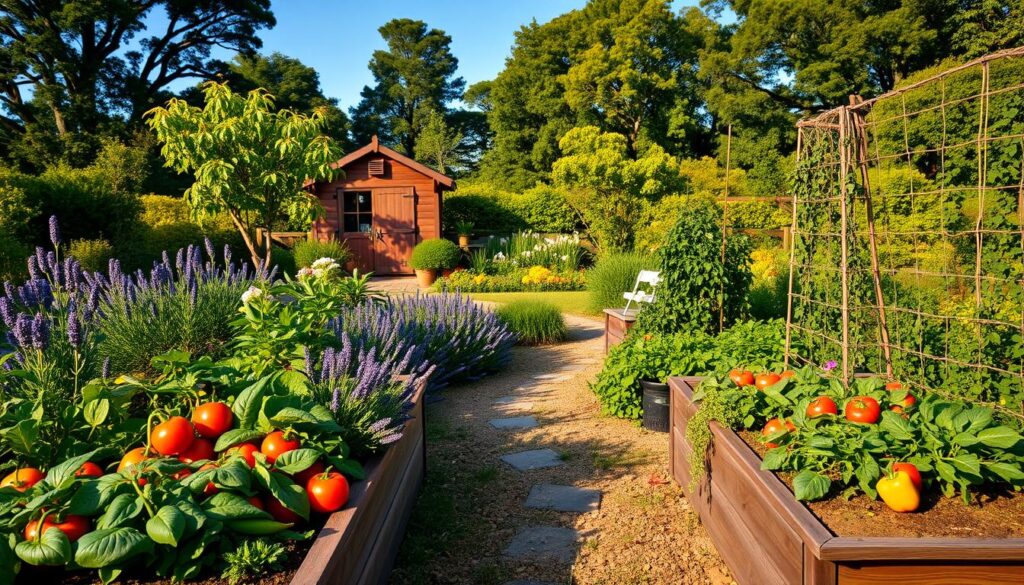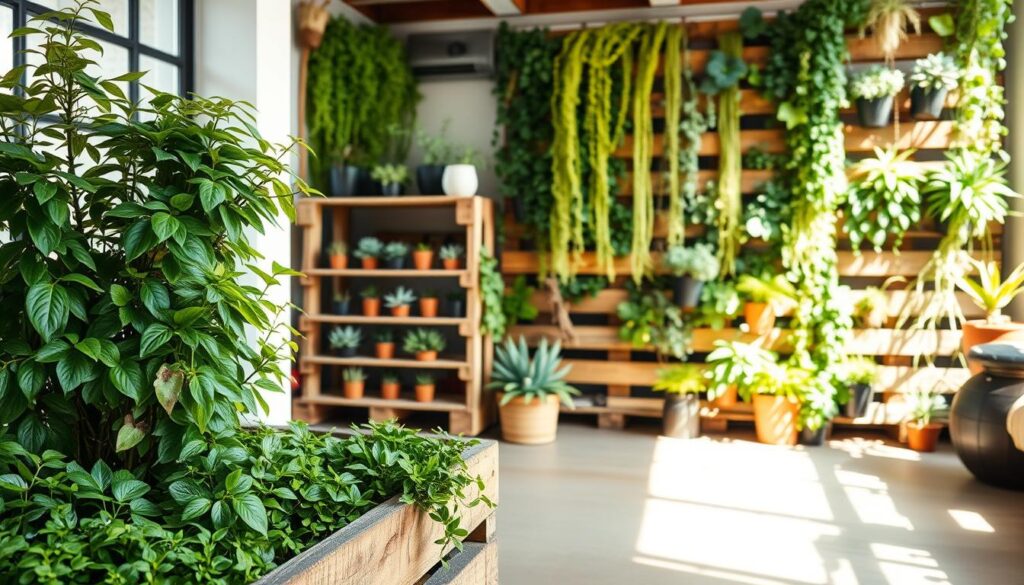
Garden House
Imagine sipping coffee in a space that feels both private and part of nature—does your backyard hold this potential? The answer might surprise you.
More Americans are turning empty corners into garden houses. These cozy structures blend indoor comfort with outdoor beauty. They’re not just sheds—they’re extensions of home life, perfect for yoga, entertaining, or quiet mornings.
Why settle for a plain yard when you can build a sanctuary? This guide explores how garden houses boost property value. They create spaces as inviting as your living room. Discover affordable options, stylish designs, and tips to turn your plot into a year-round oasis.
Ready to rethink what your backyard can become? Let’s start with the basics of crafting your own garden house retreat today.
What Is a Garden House and Why You Need One
A garden house changes how we use outdoor spaces. It’s not just a shed or gazebo. It’s a garden cabin that adds comfort and style to your home. It’s perfect for hobbies, relaxing, or hosting guests. This trend is making backyards across the U.S. more special.
Defining the Modern Garden House
Today’s garden houses are all about being useful and looking good. They have:
- Windows for natural light
- Electricity and heating systems
- Customizable interiors (like offices, gyms, or meditation rooms)
The Evolution of Outdoor Living Spaces
Outdoor areas have evolved from simple to luxurious over time:
- 1950s-80s: Focused on storage and shade
- 2000s: Gazebos with seating
- 2020s: Full-featured outdoor living space designs

Where Luxury Meets Nature
Modern designs blend high-end materials with nature’s beauty. Here’s how it’s changed:
| Aspect | Traditional Shed | Modern Garden Cabin |
|---|---|---|
| Purpose | Storage | Luxury retreat |
| Materials | Plain wood | Sustainably sourced wood and glass |
| Comfort | No climate control | Heating/cooling systems |
A well-designed garden cabin is a cozy haven. It connects you to nature while keeping you comfortable.
Transforming Your Backyard into a Natural Sanctuary
Every backyard can become a natural sanctuary where peace and practicality meet. Start by watching your space at different times to see sunlight, shade, and trees. This helps find the best spots for your garden house while keeping your favorite plants.
Even small lots can turn into a serene garden hideaway with the right plan.
- Privacy: Use hedges like boxwood or bamboo to block street views
- Flow: Position walkways to connect your home’s entrance to the garden house
- Scale: A 10x12ft structure works for most suburban lots
- Zoning: Check local regulations allowing accessory structures up to 200 sq ft
| Backyard Size | Design Strategy |
|---|---|
| Small (under 5,000 sq ft) | Vertical gardens + compact pergola designs |
| Medium (5,000-10,000 sq ft) | Curved pathways + modular structures |
| Larger properties | Defined garden rooms + multi-level terraces |
Start with a pencil sketch of your house, trees, and where you want to place your garden house. Visit stores like Home Depot or The Home Depot’s outdoor living sections. They offer pre-fabricated kits starting at $3,500. Even with a small budget, you can create a welcoming space by focusing on function and nature.
Popular Garden House Styles for American Homes
Choosing the right style for your garden house starts with exploring trends that blend beauty and functionality. Let’s look at four styles designed to match any backyard’s vibe.
Contemporary Minimalist Designs
Think clean lines and open spaces. These garden houses use glass walls and sleek roofs to connect with nature. Perfect for modern homes, they prioritize simplicity without sacrificing style.
Rustic Cottage Garden Houses
Embrace nostalgia with a cozy garden hut featuring timber frames and thatched roofs. Pair it with cottage gardens bursting with roses and lavender for a timeless countryside charm.
Mediterranean-Inspired Retreats
Imagine terracotta roofs and white stucco walls. This style brings sunny European vibes with arched windows and stone accents, ideal for warm climates.
Japanese Garden Houses
Minimalist yet serene, these spaces use natural wood and sliding screens. They encourage harmony with outdoor elements like gravel paths and Zen rock gardens.
| Style | Key Features | Material Highlights |
|---|---|---|
| Contemporary | Large windows, open layouts | Steel, glass, concrete |
| Rustic Cottage | Storybook charm | Wood, thatch, brick |
| Mediterranean | Architectural curves, terracotta | Stucco, tile, limestone |
| Japanese | Sliding doors, natural textures | Cypress wood, bamboo, stone |
Essential Elements of a Lush Green Oasis
Creating a garden house that feels like a lush green oasis begins with key design choices. The foundation, materials, and weather resistance all play a role. Each choice affects how long your outdoor space lasts and how well it blends with nature.
Foundation and Structural Considerations
The type of soil and climate determine the foundation. In areas prone to hurricanes, strong concrete footings are essential. For colder climates, deep foundations help avoid cracks. Sloping land might need walls or decks to keep the space stable.
Material Selection for Longevity
- Wood: Pressure-treated pine or cedar fights decay in damp areas.
- Composite: Wood-plastic mixes prevent splinters and rot in wet places.
- Stone: Natural stone patios last longer than concrete in freezing temperatures.
- Low-iron glass: It reduces glare, allowing sunlight to enter without distortion.
Connecting Indoor and Outdoor Spaces
Making the space feel larger is key. Sliding glass walls or pergolas let air circulate. Flooring that matches indoors and outdoors, like bluestone, ties everything together. Overhangs with solar shades keep it cool while keeping views open.
Together, these elements transform your garden house into a lush green oasis. It adapts to weather and becomes more stunning with time.
Garden Layout Designs to Complement Your Garden House
A well-planned garden design layout makes your garden house the heart of your outdoor space. Start by mapping out pathways that lead visitors from your home to the garden house. Use curves or straight lines to match your style.
Open spaces around the structure invite sunlight. Strategic planting beds add texture.
Consider these design principles for a balanced backyard garden layout:
- Pathways: Use gravel or pavers to guide foot traffic and divide garden zones.
- Privacy screens: Bamboo groves or boxwood hedges block unsightly views while softening edges.
- Outdoor rooms: Define seating areas with pergolas or fire pits using natural materials.
Factor in maintenance early. Group thirsty plants near water sources. Place low-maintenance shrubs in high-traffic areas.
Native plants like lavender or blue star grass reduce upkeep. They also attract local wildlife. Use vertical gardens on fences to maximize small spaces without overwhelming the garden house.
Regional climate shapes your choices. In arid zones, xeriscaping with stones and drought-resistant plants like yucca creates drama. Coastal regions thrive with salt-tolerant junipers and driftwood accents.
Let your layout respond to sunlight patterns. Shade-loving ferns under trees, sun-loving blooms in open areas.
Creating the Perfect Vegetable Garden Design Around Your Retreat
A well-planned vegetable garden can make your garden house a fresh produce hub. It can also add charm. Whether you’re starting small or aiming for a big plot, these tips will help. They ensure your vegetable garden design enhances your outdoor space.

Potager Garden Integration
The French potager garden tradition is all about mixing herbs, flowers, and veggies in colorful patterns. It uses geometric beds and mixed planting for a kitchen-focused masterpiece. For instance, planting leafy greens with marigolds can deter pests and add color. Backyard vegetable gardens like this become living art.
Vertical Growing Solutions
Use vertical systems to save space:
- Trellises for peas and cucumbers along fences
- Wall-mounted planters for strawberries or herbs
- Arbors draped with beans or squash vines
Vertical setups save space and frame your garden house with greenery. They’re great for small garden layout vegetable plans.
Raised Bed Configurations
Raised beds improve drainage and make gardening easier. Here are some layouts:
- Keyhole Beds: Circular beds with a wedge-shaped path for easy access.
- Grid Patterns: Square grids with paths for wheelchair or stroller access.
- Border Beds: Raised boxes around paths or seating for compact veggies like carrots.
| Style | Best Crops | Space Use |
|---|---|---|
| Potager | Tomatoes, basil, lettuce | Medium |
| Vertical | Beans, peas, strawberries | Efficient |
| Raised Beds | Carrots, beets, herbs | Customizable |
Use mulch and drip irrigation to keep your garden thriving. Your garden house will soon be surrounded by beauty and bounty.
Seasonal Considerations for Your Garden House
Make your garden house a cozy spot all year with these tips. Whether you live in the warm South or chilly Midwest, planning ahead keeps it comfy and lasting.
Spring and Summer Optimizations
Stay cool in the heat with these easy changes:
- Ventilation: Add retractable screens or open-air pergolas for better air flow.
- Use shade like motorized awnings or climbing ivy to keep it cool.
- Choose light, water-resistant furniture from places like Crate & Barrel for a breezy feel.
Fall and Winter Preparations
Get your garden house ready for cold weather:
- Insulate windows with weatherstripping and add thermal curtains.
- Put in a small wood stove (like Stûv Eco) or electric heater for warmth.
- Protect roofs from snow with angled designs and gutter guards.
Year-Round Enjoyment Strategies
Change your space easily with these flexible ideas:
- Change furniture: Use stackable chairs and modular tables.
- Plant evergreens and seasonal flowers for color all year (like winterberry hollies).
- Add smart lighting like Philips Hue for a cozy evening vibe anytime.
Budget-Friendly Ways to Create Your Botanical Refuge
Turning your outdoor space into a botanical refuge doesn’t need to cost a lot. You can create a beautiful space with a little creativity and smart choices. Start with small steps, choose local plants, and let nature help. Even small investments in plants and design can make your yard a peaceful backyard inspiration.
- Repurpose old furniture or pallets into planters for instant greenery.
- Shop at salvage yards for affordable materials like reclaimed wood or vintage windows.
- Grow vertical gardens using trellises to maximize space without high costs.
- Use native plants—they adapt easily and reduce long-term maintenance expenses.
- Phase construction over seasons, focusing on one area at a time.

In Texas, a family turned an unused shed into a cozy garden house for $2,500. They painted it, added potted ferns, and used secondhand decor. Their story shows how small steps can make a big difference. Check out Home Depot or local nurseries for sales on shrubs and mulch. Even a few containers with succulents can change your outdoor space. Every dollar spent wisely brings your vision closer. Whether you build a pergola or plant a wildflower patch, your botanical refuge begins with one decision today.
Bringing Your Garden House Dreams to Life: Next Steps
Ready to make your garden house dream come true? First, check local building codes and permits needed in your area. Each U.S. city has its own rules, so it’s smart to talk to your local zoning office. This ensures you follow the law.
Then, make a realistic timeline. Think about the weather and when contractors are free. Decide what’s most important to you, like an outdoor kitchen or a water feature, based on your budget and how you live.
Look for designers or contractors to work with. Ask for their portfolios and references. The American Society of Landscape Architects has a directory to help you find them. Also, check out The Garden House by Susie Randall for design ideas.
Keep a checklist of your decisions, like materials, budget, and permits. This helps keep your project on track. Building a backyard retreat is a journey. Every step, from making plans to picking plants, helps create your space.
Share your progress on social media using #GardenHouseDreams for inspiration. Happy building—your perfect outdoor escape is waiting for you.

Leave a Reply